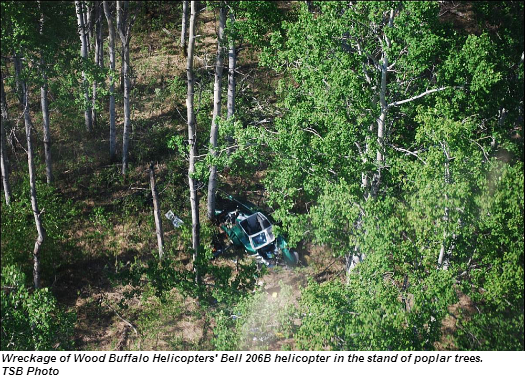TSB Press Release | February 5, 2014
Estimated reading time 1 minute, 51 seconds.
The Transportation Safety Board of Canada (TSB) has released its investigation report
(A13W0070) into a collision with terrain of a Bell 206B helicopter near Fort McMurray, Alta.
On May 29, 2013, the Bell 206B helicopter operated by Wood Buffalo Helicopters was conducting wildlife survey work approximately 75 nautical miles north of Fort McMurray, Alta., with one pilot and two passengers on board. While looking for a landing site, the helicopter entered an un-commanded rotation and descended into a stand of trees. The emergency locator transmitter activated on impact. There was no post-impact fire. The pilot and rear-seat passenger were fatally injured; the front-seat passenger was seriously injured.
The investigation found that the helicopter had entered a flight condition that resulted in a loss of tail rotor effectiveness, which caused a loss of control at an altitude that made recovery impossible and resulted in a collision with terrain.
Since the occurrence, Wood Buffalo Helicopters has made changes to its pilots’ training forms to document that loss of tail rotor effectiveness (LTE) instruction was completed during their technical ground training and flight training programs. Wood Buffalo Helicopters also conducted an internal LTE awareness campaign through a company safety meeting as well as through the creation and distribution of an operations bulletin on LTE and the hazards related to slow and low flight.

